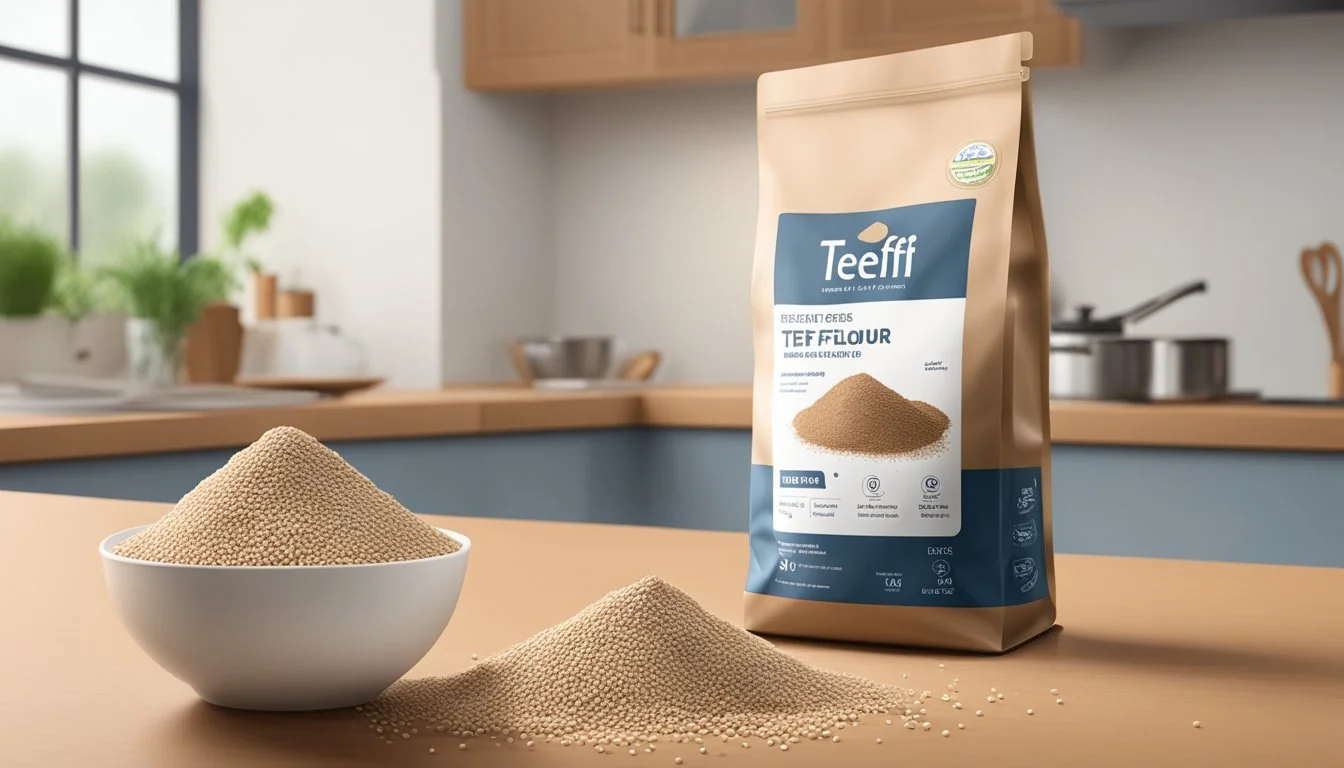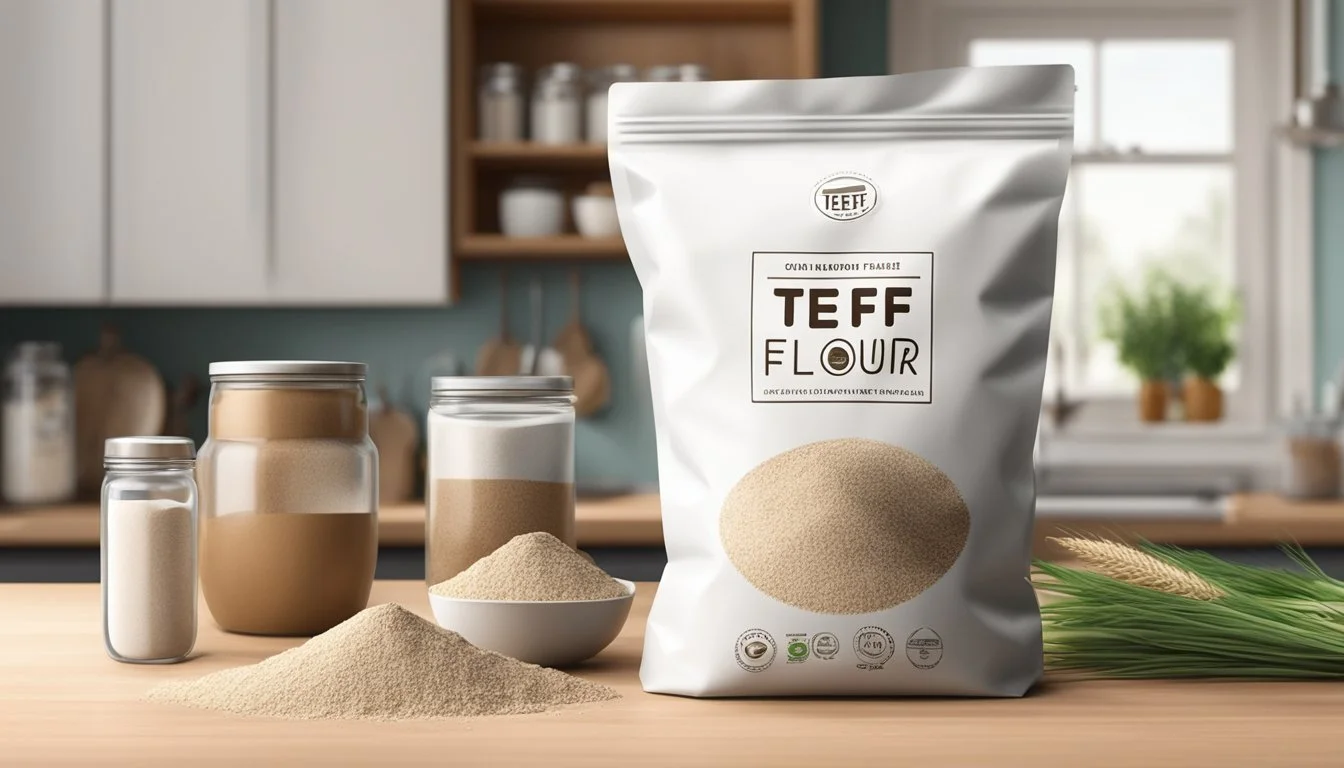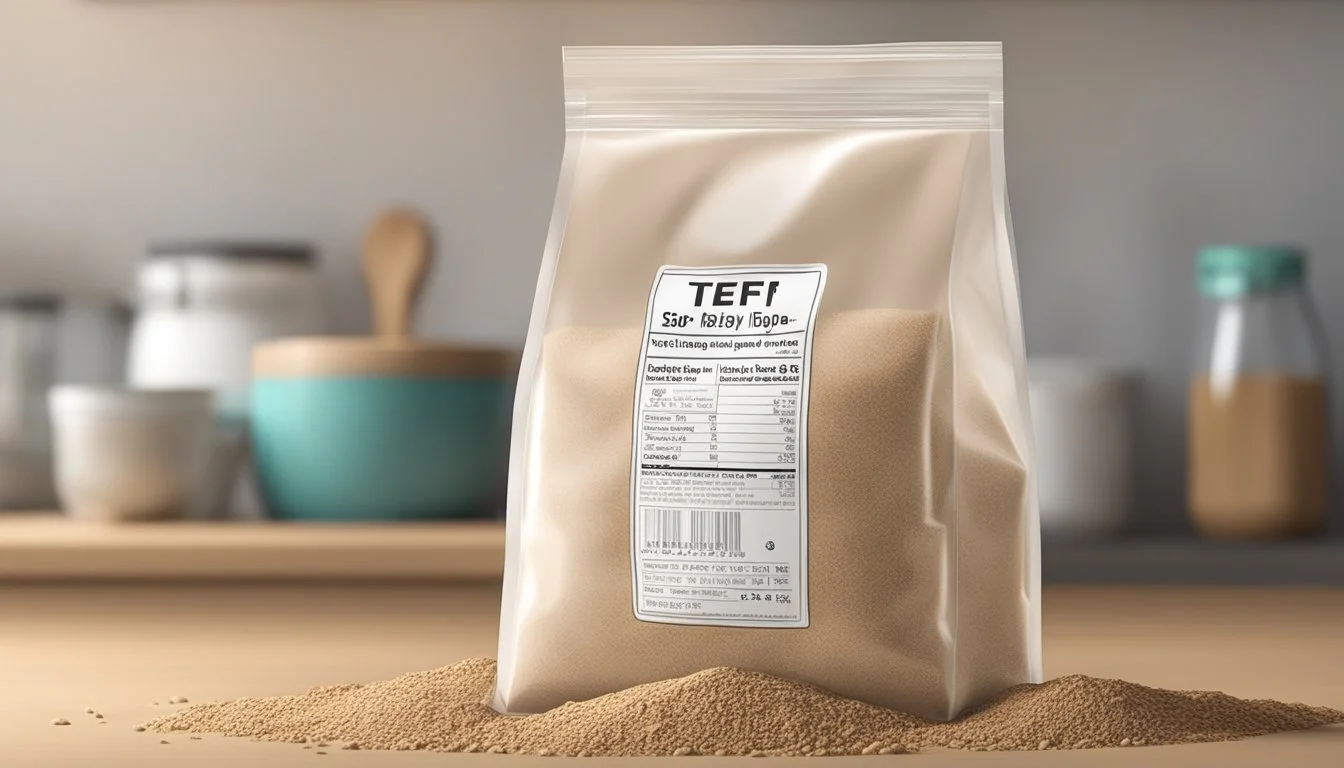Does Teff Flour Go Bad?
Understanding Shelf Life and Storage Tips
Teff flour, derived from the ancient grain teff originating in Ethiopia, is a gluten-free alternative to conventional wheat flours. Renowned for its use in making injera, the traditional Ethiopian spongy flatbread, teff flour is appreciated for its nutrients and mild, nutty flavor. Its popularity has grown due to the increasing demand for gluten-free and nutrient-rich ingredients in cooking and baking.
The question of whether teff flour can go bad is important for consumers who seek to maintain the quality of their gluten-free products. Teff flour does have a shelf life, typically lasting up to 1 to 2 years when stored correctly in a cool, dry place. The longevity of the flour can be affected by factors such as exposure to air and moisture, which can compromise its texture and taste.
For optimal freshness, the storage conditions of teff flour should be monitored closely. It should remain in an airtight container away from heat and humidity. Over time, teff flour may exhibit signs of spoilage such as clumping, a damp texture, or an off smell, indicating that it has absorbed moisture and is no longer suitable for consumption. Users are advised to observe the best-by dates provided by manufacturers and to look for consistent color and texture to judge the flour's quality.
Nutritional Profile of Teff Flour
Teff flour is renowned for its rich nutritional content, offering a healthy balance of macro and micronutrients that contribute to various health benefits.
Macro and Micro Nutrients
Protein: Teff flour is a good source of protein, which is crucial for muscle repair and growth. It contains all nine essential amino acids, making it a complete protein, which is not common in plant-based sources.
Fiber: High in dietary fiber, teff aids in digestion and promotes satiety. This makes it beneficial for weight management and digestive health.
Iron: One of the most notable minerals in teff flour is iron, which is essential for the formation of hemoglobin in the blood and the prevention of anemia.
Calcium: With a notable calcium content, teff is an excellent addition to the diet for maintaining bone health and strength.
Magnesium: Important for numerous biochemical reactions in the body, magnesium found in teff flour supports muscle and nerve function and energy production.
Other Nutrients: In addition to these, teff flour is also a source of other important minerals, including manganese, copper, zinc, and selenium.
Comparison to Other Grains
Compared to other grains like quinoa, oats, buckwheat, amaranth, sorghum, and millet, teff flour stands out for its higher levels of calcium and iron. For instance, teff has more manganese and copper than conventional all-purpose flour and greater magnesium content compared to many whole grains.
Health Benefits
The nutrients found in teff flour contribute to various health benefits. The presence of essential amino acids supports overall body function, while iron and calcium play roles in maintaining healthy blood and bones, respectively. The high fiber content assists in better digestion and controlled appetite, and the combination of vitamins and minerals can contribute to an improved overall nutritional value of the diet.
Teff Flour Culinary Applications
Teff flour's versatility makes it a staple in both traditional Ethiopian dishes and modern gluten-free cooking. It imparts a unique flavor that enhances bread, cakes, and various other baked goods.
Traditional Ethiopian Cuisine
Teff flour is the quintessential ingredient in Injera, a traditional Ethiopian sourdough flatbread. The unique earthy flavor of teff contributes to Injera's distinctive taste, making it a beloved staple. Injera serves not only as a bread but also as an eating utensil, with its spongy texture perfect for scooping up lentils, vegetables, and meats.
Preparation method:
Mix teff flour with water and allow to ferment to create the batter.
Cook like a pancake on a flat skillet.
Modern Gluten-Free Recipes
For those with celiac disease or following a gluten-free diet, teff flour provides a nutritious alternative for traditional wheat flour. Its nutty flavor enhances the taste profile of gluten-free recipes, from pasta to pancakes.
Popular gluten-free recipes with teff flour include:
Pasta: Substitute for wheat flour to make gluten-free versions.
Pancakes: Add teff flour for a wholesome breakfast option.
Baking and Other Uses
Teff flour contains bran and is high in fiber, ideal for healthier baking options. It adds a molasses-like sweetness to baked goods such as cakes, cookies, and bread, making it a preferred ingredient for those seeking to boost nutritional content.
Baking applications:
Bread: Use teff flour to contribute taste and texture.
Cakes and Cookies: Provides a moisture-rich crumb and distinct flavor.
Other culinary uses:
Porridge: A nutritious alternative to traditional porridge.
Understanding Teff Flour Freshness and Quality
To ensure the optimal use of teff flour, it is essential to recognize the indicators of spoilage, understand the variables impacting its longevity, and identify signs of rancidity.
Signs of Spoilage
Color Change: Flour that has shifted from its natural color to a dull or grey hue may indicate spoilage.
Odor: A sour or off smell is a strong indicator that the flour is no longer fresh.
Texture: Fresh teff flour should be powdery. Clumps or a damp feel suggest moisture intrusion, which can lead to mold.
Mold: Visible mold growth on the flour is a clear sign that it must not be used.
Factors That Affect Shelf Life
Storage Conditions: Teff flour should be stored in a cool, dry place away from direct sunlight to prolong freshness.
Packaging: An airtight container limits exposure to air, preserving the flour's quality.
Milling Date: Older flour is more likely to go stale; thus, the fresher the milling date, the longer the shelf life.
Manufacturer's Guidelines: Adhering to best-by dates and storage recommendations on the label is crucial.
How to Detect Rancidity
Taste: A subtle taste test can help detect rancidity. Rancid flour will taste bitter or off.
Smell: Rancid flour often emits an unpleasant, sharp odor.
Oxidation: When fats within flour oxidize, they create rancidity, leading to both off tastes and smells.
Teff flour's typical shelf life is approximately 1 to 2 years if stored properly. Signs such as clumpy texture or a musty smell are indicators that the flour is past its best quality. Ideal storage extends its usability, while any deviation from recommended conditions can affect its shelf life. A bitter taste or unpleasant odor signifies rancidity—a clear mark that the flour should be discarded. Deviation from these quality benchmarks suggests the flour may compromise the tastefulness and safety of your culinary creations.
Proper Storage Techniques for Teff Flour
Maintaining the freshness of teff flour relies on controlling environmental factors such as temperature, humidity, and air exposure.
Optimal Conditions
Teff flour thrives in an environment that is cool, dry, and dark. A pantry or cupboard away from heat sources and sunlight offers an ideal setting. The ideal temperature for storing teff flour should be consistently below 70°F (21°C). High temperatures can cause the oils in teff flour to spoil, leading to a rancid taste.
Airtight Containers
Upon purchase or milling, transferring teff flour to an airtight container is a crucial step. A sealed environment minimizes the flour's exposure to air and moisture, which can deteriorate its quality. Containers made of glass, metal, or BPA-free plastic with secure lids are most effective.
Refrigerating and Freezing Options
For prolonged storage, refrigerating or freezing teff flour can greatly extend its usability. When refrigerated, place the airtight container in the coldest part of the refrigerator to keep a consistent temperature. In the freezer, teff flour can be stored for up to one year. To prevent freezer burn and flavor transference, ensure the flour is sealed properly. Thawing the flour at room temperature before use is recommended.
Substitutes and Alternatives
When teff flour is unavailable or if one needs to avoid gluten, several alternative flours offer similar properties for various culinary applications. These alternatives include gluten-free options and other grains that can be used in cooking to replicate the results of teff flour.
Other Gluten-Free Flours
Buckwheat Flour: A common substitute, buckwheat flour is gluten-free and can be used in a 1:1 ratio with teff flour. Its robust flavor lends itself well to bread and other baked goods.
Quinoa Flour: Offers a nutty and earthy flavor and is denser than teff flour, making it suitable for heartier bread recipes.
Coconut Flour: Highly absorbent and used in smaller quantities, with a typical ratio of ¼ cup of coconut flour to replace 1 cup of teff flour. Additional liquid may be required to balance the consistency.
Tapioca Flour: Cassava-derived and gluten-free, it can be substituted equally with teff flour and is ideal for thickening sauces and baking.
Grain Alternatives in Cooking
All-Purpose Flour: While not gluten-free, all-purpose flour can serve as a substitute in non-gluten-free recipes where the distinctive taste of teff is not essential. The ratio for substitution is generally 1:1.
Gluten-Free All-Purpose Flour: A blend of gluten-free flours designed to mimic the texture of wheat flour makes a convenient alternative for teff in gluten-free baking.
Oat Flour: May require additional binding agents such as xanthan gum or psyllyllium husk powder when used as a replacement for teff flour. Gluten-free oat flour should be ensured if gluten is a concern.
These substitutes provide flexibility in cooking and baking, accommodating dietary restrictions and availability of ingredients.
Frequently Asked Questions
What is the shelf life of teff flour?
Teff flour usually has a shelf life of approximately 1 to 2 years if stored properly. The shelf life can be affected by factors such as exposure to air and the date of milling. Users should adhere to the specific storage recommendations and check best-by dates on the manufacturer's label.
Is teff flour suitable for a gluten-free diet?
Yes, teff flour is gluten-free and an excellent alternative for individuals on a gluten-free diet. It comes from Eragrostis tef, a cereal grain known for its suitability for gluten-free cooking and baking.
Can the color of teff flour indicate its quality?
Fresh teff flour should have a consistent color. Discoloration or clumps may indicate that the flour has absorbed moisture and potentially gone bad.
Does teff flour have a unique flavor?
Teff flour is known for its mild, nutty, and slightly molasses-like flavor, which can add a unique taste to baked goods and other dishes.
Is teff flour always whole grain?
Teff flour retains the germ, bran, and endosperm (kernel), making it a whole grain with all the associated nutrients intact.
Can teff flour be fermented?
Teff flour can be used in fermented foods and imparts a mild sour flavor profile, similar to fermented oats.
What is the glycemic index of teff flour?
The glycemic index of teff flour is generally considered lower than many other grains, making it a suitable option for those monitoring their blood sugar levels.






